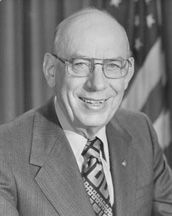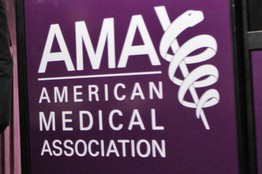Related Topics
Reflections on Impending Obamacare
Reform was surely needed to remove distortions imposed on medical care by its financing. The next big questions are what the Affordable Care Act really reforms; and, whether the result will be affordable for the whole nation. Here are some proposals, just in case.
Utilization Review
When medical care was entirely a private two-party arrangement, the patient and doctor negotiated what was to be done, and often the price; if the patient could not pay, some embarrassed workaround was figured into the equation, including a vague promise to pay the doctor when he could. A surprising number of patients did pay later, and because the doctor's bill contained very little overhead, even partially paying it off created an unspoken promise that the patient would now be welcomed back.
It was the appearance of insurance forms which created secretarial overhead, even though of course it also brought along some revenue. Skeptics may doubt the extent of this, but at my advanced age as a patient I now visit four doctors of different specialties. Collectively, they seem to have fourteen assistants and fourteen computers I can count. That remains the situation even if a patient delegates decision-making to members of the family, or a hospital wants to know what is being given away to charity patients, or a bewildered patient seeks a second opinion. It changed abruptly when third-party payment seemed to entitle a government or an insurance company to be reassured that claims were legitimate. This uneasy and often resented intrusion into a private matter began to cause friction even in the 1920s, soon after third-party reimbursement made an American appearance, and as physicians gradually recognized that "utilization review" generated more overhead cost than simple claims submission. At first, health insurance companies were restrained from brisk business-like behavior, by the realistic possibility that the patient might switch back to paying bills in cash. Somehow that possibility now seems so remote that when the owner of a Korean auto manufacturing company tried to pay his hospital bill with hundred-dollar bills, the hospital simply had no procedure for handling such an unexpected request.
As long as a secretary was sitting there filling out forms, she might as well answer the phone for appointments. In this way, appointment systems became routine, including hidden extra revenue loss generated by broken appointments. Insurance pre-payment is always complicated by the realities of emergency care, where considerable expense must sometimes be incurred before the third-party has a chance to review the facts; in this lies the origin of the term "reimbursement". The third-party acquired the ability de facto to delay or deny reimbursement, an action immediately regarded as high-handed, since expenditures had already been made in good faith and could not be recovered. The right to deny such claims was implicit, and at first it was used gingerly by insurance companies trying to establish themselves. Now that insurance is considered normal, any incurred costs must be handled in some way, so other subscribers are charged extra to keep the hospital solvent. The cost to the system is exactly the same this way, but no other way has been suggested to maintain the credibility of insurance oversight. When I once told the owner of a department store that I had 2% bad debts in 1955 (ten years before Medicare) he replied that my bad debts were less than his and my bookkeeping was far more elaborate. True, some hospitals could not survive without the insurance system, but if others in better locations examined their experience extensively, they might discover their accident rooms are net losers for the insurance. Third-parties slowly retreated, hospital prices crept upward and the system readjusted, but no one is entirely satisfied with this showmanship masquerading as a balance of terror. When you see a sick or injured person turned away from an emergency department for lack of insurance proof, you can be sure there is either not enough slack in the system, or not enough administrative imagination.

|
| Senator Wallace Bennett |
Early in the 1970s, Senator Wallace Bennett of Utah devised a solution to this problem, and persuaded the rest of Congress to endorse a nation-wide system of Professional Review Organizations (PSRO), run by the medical profession but paid for by Medicare. Although many physicians muttered about the "creation of new elites", and hospitals were particularly uneasy about the migration of power, the new system worked reasonably well. If the physicians in the local PSRO approved a service, it was paid for. If payment was denied by a local PSRO, an appeal to a state-wide body of physicians was provided. In that way, prevailing local standards were respected, while appeal to distant physician judges was also provided, to guard against local vendettas ganging up on someone they disliked. Inevitably, a few localities would elect an unsatisfactory PSRO, so a voluntary national organization was formed to educate, inform and defend the process, and better able to discipline it with peer pressure than might be supposed. The national organization was pleasingly benevolent, sometimes apologizing for its role as a necessary one to weed out constituent PSROs whose bad behavior might discredit the others and start up the usual chatter about professional self-government: The foxes were guarding the hen house, and must be replaced by wolves. The PSRO gradually adhered to an unspoken rule of rarely boasting of success; it saw its role as redirecting unsatisfactory behavior, not vanquishing wrong-doers. It soon became evident that successful PSROs were of two types, rural and urban. In localities where a single hospital served a county or more, physicians were of all types mixed together, and the need was to strengthen the emergence of the natural leaders, often by placing them on the PSRO board. In large cities, however, a sorting-out process had usually resulted in strong hospitals and weak ones; birds of a feather flew together. The weaker hospitals were soon identified and urged to elect stronger leadership; sometimes it was necessary to suggest that the institution might serve better as a nursing home. Throughout the process ran the threat of exposure; successful PSROs usually relied far more on peer pressure than the threat of withholding payment.
What ultimately defeated the PSRO was its success, not its failures. Many pre-existing elites were content to see a new governance structure fumble, but felt highly threatened by a successful one. Moreover, the AMA leadership seemed particularly concerned about the direction of "regulatory capture", and was not completely certain whether the PSRO was beginning to dominate the Washington bureaucracy, or the AMA House of Delegates, or a little of both. The PSRO fraternity was definitely a large national organization of doctors who knew and respected each other, and many of its leaders were in the AMA House. Matters finally came to a head in a famous vote opposing the PSRO, by 105 to 100. The opinion of organized medicine meant a great deal to Congress. When representatives of the PSRO next testified before the Senate Finance Committee, the Chairman of the Committee wryly announced the next speaker from the AMA was one who was "presumably here to explain to us the difference between 105 and 100." The PSRO law was soon amended, and insurance review took its place.

|
| AMA House of Delegates |
For the time being, utilization review in the future is apparently currently limited to Medicare, under the Medicare Accountable Care Act. With the foregoing bit of history to warn the Accountable Care Organizations about what they are getting into, a simple set of principles can be stated. Utilization review encounters two components of cost: the volume of care, and the price of the services. Doctors control the volume, hospital administrators control the prices. Determining the proper volume of services is a job for practicing physicians, alone and unhampered. To some extent, under the new law an incentive to keep it that way was created by sharing with the provider members a portion of any cost savings associated with the patient group. But the ability to change the sharing will probably be a a one-sided government decision unless the physicians fiercely insist that it remain negotiable. Agreeing that the physician voice should be dominant in the issue of service volume should not imply agreement to exclude their inspection of the prices of services. When physician income becomes linked to their choosing less expensive alternatives, physicians must not continue to be blinded to what the true cost of components truly is. While it remains conceded that hospitals and vendors must retain some flexibility in adjusting the ratio of charges to costs, any deviation from a standard bandwidth must be negotiated with the physicians affected. Past experience should be ample proof of the fairness of this demand.
The volume of most medical services at present is about right, but prices will keep rising when they bear little relation to the underlying direct costs. Furthermore, the Medicare (or similar) Cost Report of every hospital must annually report the ratio of cost to charges, probably by item rather than department. And this ratio must be monitored. Complexity is no argument against doing so; the Chargemaster system has never been resisted because of its complexity. It has been no secret for thirty years that a twenty-dollar aspirin tablet has a very high ratio of charges to its actual cost. Other items are provided at a loss, and the mixtures are highly variable between hospitals. Everyone concerned knows this situation is unsustainable, but everyone recognizes that total denial of reimbursement is entirely too destructive if no slack remains in the system. If it is successful an appeal mechanism will become necessary, because new treatments can be resisted by old treatments, but the optimum rate of change will vary by local situation.
Rather than overcomplicate matters, the goal should be total denial of reimbursement for denied services, because the public will demand it. It must however, be coupled with an adequate profit margin on approved services, to service the costs of retrospective review. Designation of the optimum ratio of cost to charges is a critical decision, much like the function entrusted to the Federal Reserve, of picking the best average interest rates for the national economy. If the agencies selected by Obamacare get this point very wrong, very often, the public must quickly be in a position to let everyone know of its displeasure.
The other source of circumvention is the hospital system of enforcing a physician hierarchy reporting to a physician chieftain, but insisting that the chieftain himself be financially beholden to the hospital administration. In that way, financial health of the institution sometimes dominates the health of the third parties, who then find a way to retaliate. if this issue is neglected a deadlock could affect the health of the patients. Since a three-way balance must be preserved, governance must be fairly shared three ways. Those who believe this is a minor issue because the third party obviously has final power, have a great deal to learn.
Originally published: Wednesday, May 29, 2013; most-recently modified: Friday, April 12, 2019